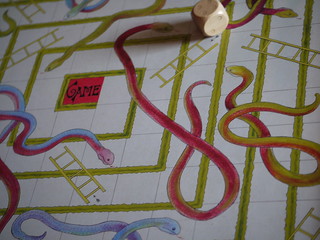Cognitive Development
Between 6 and 8 years of age, cognitive skills are becoming more complex. Children are starting to perform simple operations. In fact, they are starting to use logic when solving problems. Children at this age are improving the cognitive skills that they already have and are learning new ones. They are learning to make connections between different bits of information and are generalizing what they learn from one setting to the next. It is very important to watch children who appear to be struggling with their cognitive skills, and get them help as soon as possible.
Here are some signs of developmental delay to watch out for:
- difficulty paying attention for longer than 10 minutes;
- difficulty engaging in basic classification activities (such as: grouping items based on one characteristic: putting all red blocks together);
- difficulty planning ahead for a certain activity (for example, making sure child has everthing he or she needs in order to play soccer outside);
- difficulty grouping items together based on their function (for example, the cup goes with the saucer and the pencil goes with the eraser);
- difficulty getting started with an activity, and often needing encouragement from others to do so;
- not knowing what their age will be next year;
- not knowing what day of the week it is;
- not knowing the difference between right and left;
- difficulty predicting what will happen next in a story;
- not knowing which activities usually occur at night and which activities usually occur during the day;
- difficulty naming the four seasons, the seven days of the week and the twelve months of the year;
- difficulty organizing parts of an event into a logical, sequential order (for example: we get undressed and then we get in the bathtub);
- difficulty describing how items are alike (for example: blue and red are alike because they are both ‘colors’);
- difficulty describing how items are different (for example, you drink soup with a spoon and you eat steak with a fork);
- difficulty understanding basic and simple inferences (for example: the bike got stolen because we left it outside, unattended);
- difficulty identifying objects by their uses (for example, a knife is something you use to cut your meat);
- difficulty playing simple card or board games that require keeping simple scores (for example: crazy eights and snakes and ladders) (Fig. 1);
- difficulty understanding the concept of “opposite” (for example: the opposite of long is short);
- difficulty understanding that objects can fit into more than one category (for example: a ball can fit into the categories of “toys” and “things that are round”);
- difficulty understanding “cause and effect” relations (for example, I got all wet because it was raining and I wasn’t wearing a hat or carrying an umbrella);
- not knowing their home phone number and home address (closer to age 8);
- not being able to tell time, even with a digital clock or watch;
Figure 1. Snakes and ladders
Did you know?
- Children at this age are very curious and eager to learn. Lack of motivation to learn new things and lack of curiosity should be investigated thoroughly because it could indicate problems with learning.
- Children at this age tend to ask a lot of “why” or “how come” questions. If they rarely do so, and do not seem to be interested in the world around them, we should be asking ourselves why that is the case.

0 comments
Kick things off by filling out the form below.
Leave a Comment